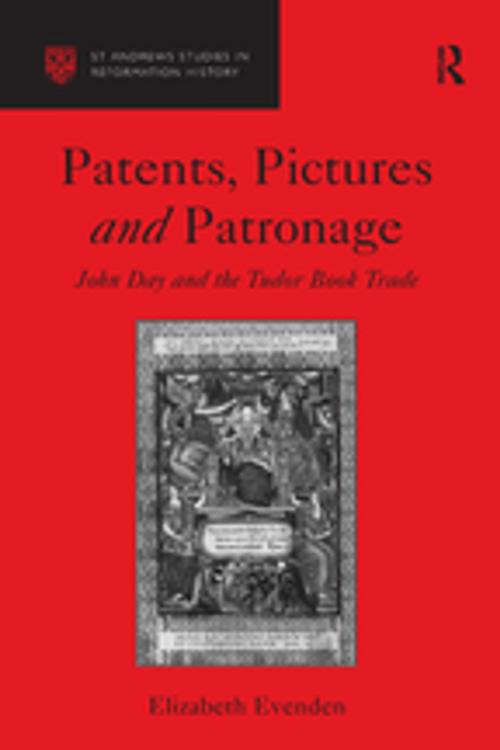| Author: | Elizabeth Evenden | ISBN: | 9781351912679 |
| Publisher: | Taylor and Francis | Publication: | December 5, 2016 |
| Imprint: | Routledge | Language: | English |
| Author: | Elizabeth Evenden |
| ISBN: | 9781351912679 |
| Publisher: | Taylor and Francis |
| Publication: | December 5, 2016 |
| Imprint: | Routledge |
| Language: | English |
John Day (1522-1584) is generally acknowledged to be the foremost English printer of the later sixteenth century. As well as printing some of the most important books of his day, most notably John Foxe's Acts and Monuments, he also pioneered enormous advances in English typography and book illustration. Yet despite his revered position in printing history, this book is the first full-length study to look into Day's life and legacy. Scholars have paid much attention of late to the Acts and Monuments but without placing it within the context of Day's overall business strategy. He was a printer whose success and range of titles, like his connections and influence, went far beyond John Foxe. Day may have gained his notoriety as the printer of Foxe's book but in order to understand both the man and his business, as Evenden shows, we must look at the wider range of Day's productions and the motivation behind them. The study begins by setting Day in the context of the sixteenth-century printing industry, examining his disputed origins and his establishment as a London printer. A number of Day's most celebrated Elizabethan productions are then discussed in detail, in order to understand not only his business strategies but also his religious and political affiliations throughout this period; similarly, Evenden examines his connections with the Stranger communities in London, and how they assisted Day's business and helped to enhance his reputation. Throughout the book it is argued that Day's printing empire and wealth were founded on a combination of two crucial factors: outstanding technical skills, and the ability to attract patrons and patents. Day carried out technically demanding printing assignments (most notably the heavily illustrated Acts and Monuments) for leading Elizabethan statesmen and churchmen and was rewarded with exclusive rights to print more lucrative works such as the ABC, Catechism, and Metrical Psalms. Thus, his success rested on both cheap and exp
John Day (1522-1584) is generally acknowledged to be the foremost English printer of the later sixteenth century. As well as printing some of the most important books of his day, most notably John Foxe's Acts and Monuments, he also pioneered enormous advances in English typography and book illustration. Yet despite his revered position in printing history, this book is the first full-length study to look into Day's life and legacy. Scholars have paid much attention of late to the Acts and Monuments but without placing it within the context of Day's overall business strategy. He was a printer whose success and range of titles, like his connections and influence, went far beyond John Foxe. Day may have gained his notoriety as the printer of Foxe's book but in order to understand both the man and his business, as Evenden shows, we must look at the wider range of Day's productions and the motivation behind them. The study begins by setting Day in the context of the sixteenth-century printing industry, examining his disputed origins and his establishment as a London printer. A number of Day's most celebrated Elizabethan productions are then discussed in detail, in order to understand not only his business strategies but also his religious and political affiliations throughout this period; similarly, Evenden examines his connections with the Stranger communities in London, and how they assisted Day's business and helped to enhance his reputation. Throughout the book it is argued that Day's printing empire and wealth were founded on a combination of two crucial factors: outstanding technical skills, and the ability to attract patrons and patents. Day carried out technically demanding printing assignments (most notably the heavily illustrated Acts and Monuments) for leading Elizabethan statesmen and churchmen and was rewarded with exclusive rights to print more lucrative works such as the ABC, Catechism, and Metrical Psalms. Thus, his success rested on both cheap and exp















